Description
A mobile Head, an alive, expressive and relaxed Face
When true verticality returns, the head (the bearer of the sensory and expressive functions) being functionally supported from the feet, recovers total freedom of movement. This new balance and great freedom of movement, allowed a considerable development of the sensory functions.
Consequently, allowing man the possibility of increasing fine differentiation of the facial organs, given access to articulated language, the vehicle of thought, and facial mimicry expressing all kind of emotions becoming language by itself and the mirror of our major dynamisms and the instrument of an authentic dialogue.
When the larynx dropped under the effect of gravity, its suspenders developed while the voice widened its range, became more mobile, and the pharyngeal crossroads opened. The tongue moved back, making room for increasingly differentiated language in terms of phonetics as well as developing the range of vocalisations, the use of various cavities (pharynx, mouth, nose, larynx) as resonators for the voice, to give a palette of colours for expressing feelings.
In other words all these functions and movements of facial organs, depend on the balance of the head and the freedom of each cervical vertebra. And the same time, the way we use those expressive and sensory instruments influence the freedom and mobility of the neck
and more generally of the all spine.
- Discovering the relationships between the head and chest, the head and space around us. (1h15)
- Turning the head when using our senses (eyes, nose, ears) (0h30)
- Opening the front and the back of the mouth… (1h05)
- Holding the mass , then letting go and how that influences movements of the head and jaw (1h07)
- Floating movements of the larynx up and down, freeing its suspenders (1h)
- Dynamic relationships between the cervical curve and the curve of the face (1h20)
- Discovering the different parts of the tongue and their mobilities. (1h)
- The tongue sliding out of the mouth like milk boiling over…(1h20)
- Functional and differentiated sphincters : lips, vocal cords and anus. ( 0h50)
- Movement of the soft palate in relation with the increasing of the arch of the foot
- Retraction / dilatation of the face by the sliding of the muscular tissues on the facial bones. (1h)




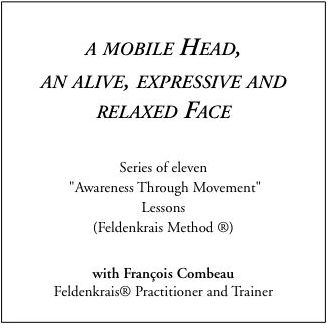
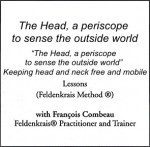
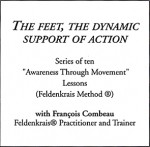
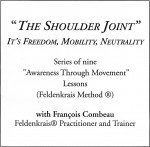
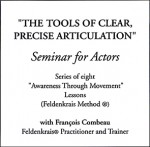
Avis
Il n’y pas encore d’avis.